Презентация section





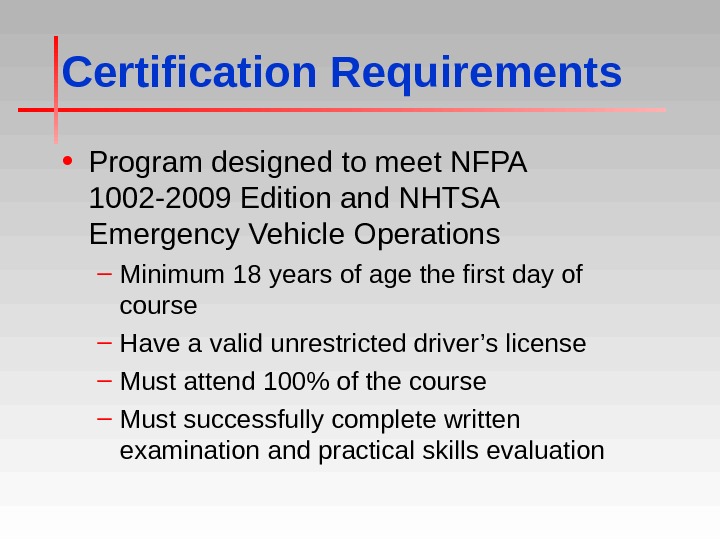







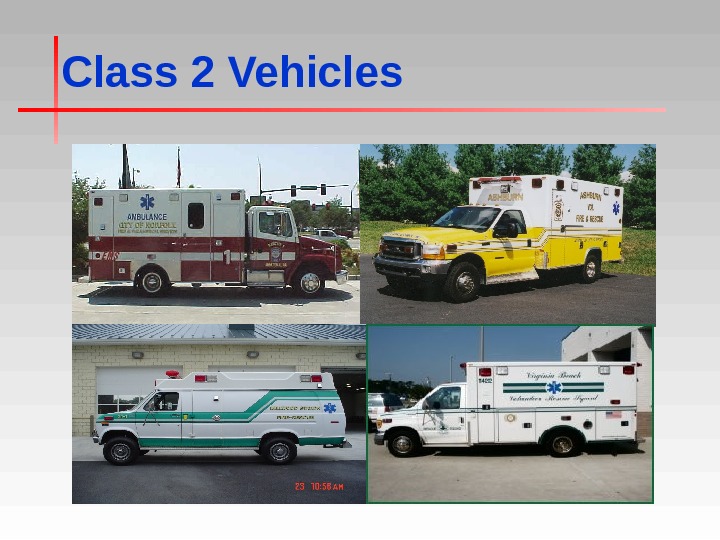





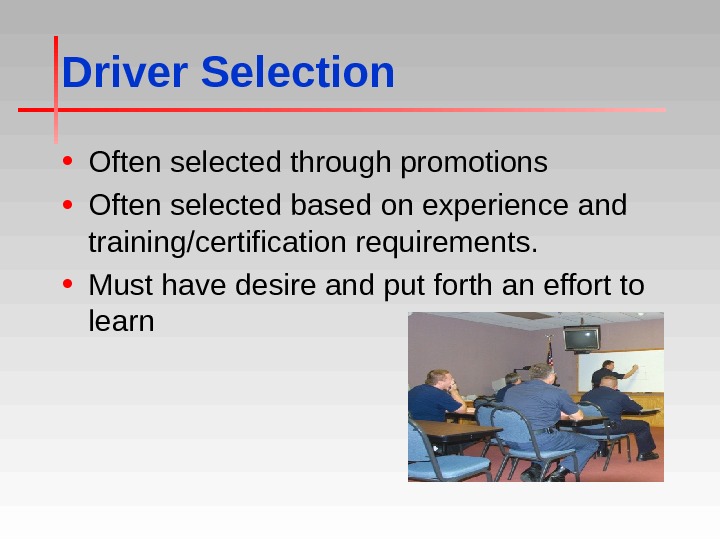


























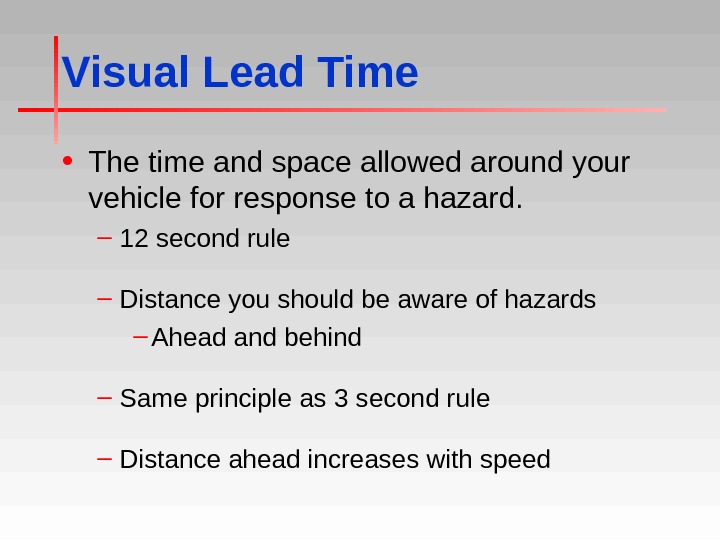










































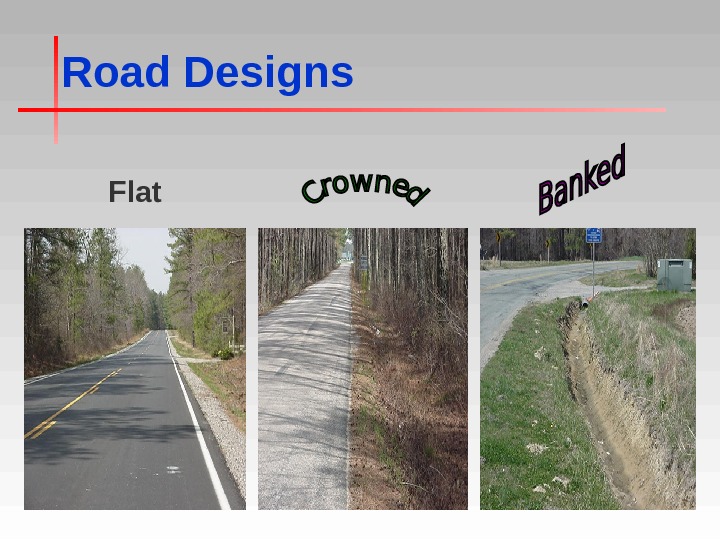

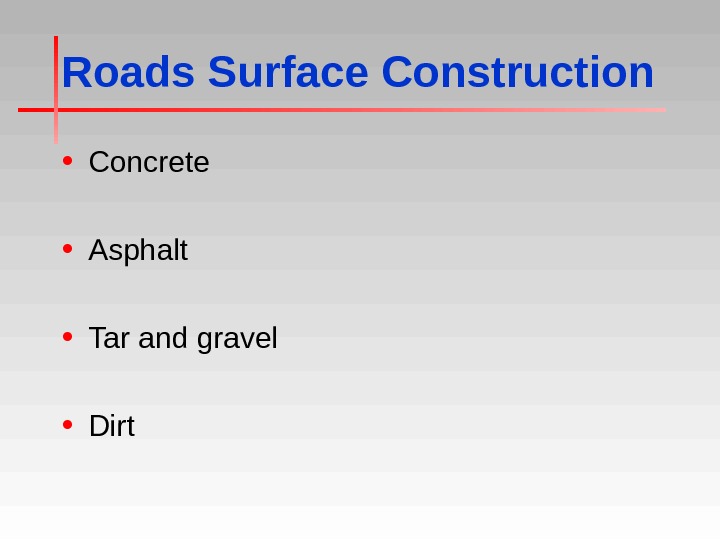


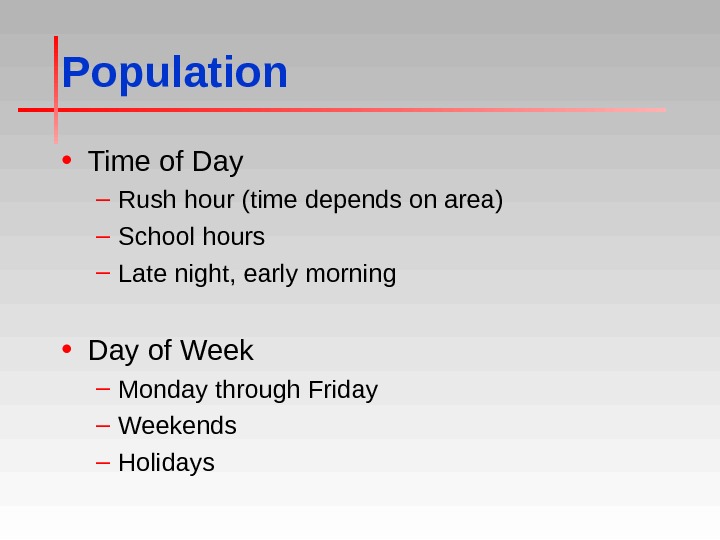


- Размер: 9.4 Mегабайта
- Количество слайдов: 96
Описание презентации Презентация section по слайдам
 Emergency Vehicle Operator’s Course – 2010 Edition
Emergency Vehicle Operator’s Course – 2010 Edition
 Session
Session
 Housekeeping • Bathrooms • Emergency Exits • Smoking Areas • Snack Locations • Trip Hazards
Housekeeping • Bathrooms • Emergency Exits • Smoking Areas • Snack Locations • Trip Hazards
 Course Pre-Requisites • Minimum 18 years of age the first day of course • Have a valid unrestricted driver’s license • Be affiliated with an Emergency Services Organization or DMV assigned to the course • Have written approval signed by an authorized agent from their sponsoring agency
Course Pre-Requisites • Minimum 18 years of age the first day of course • Have a valid unrestricted driver’s license • Be affiliated with an Emergency Services Organization or DMV assigned to the course • Have written approval signed by an authorized agent from their sponsoring agency
 Certification Requirements • Program designed to meet NFPA 1002 -2009 Edition and NHTSA Emergency Vehicle Operations – Minimum 18 years of age the first day of course – Have a valid unrestricted driver’s license – Must attend 100% of the course – Must successfully complete written examination and practical skills evaluation
Certification Requirements • Program designed to meet NFPA 1002 -2009 Edition and NHTSA Emergency Vehicle Operations – Minimum 18 years of age the first day of course – Have a valid unrestricted driver’s license – Must attend 100% of the course – Must successfully complete written examination and practical skills evaluation
 Driving Experience ** NOTE ** Student should have prior driving experience in the vehicle type and classification in which he / she will attempt to gain certification.
Driving Experience ** NOTE ** Student should have prior driving experience in the vehicle type and classification in which he / she will attempt to gain certification.
 Class Objectives • To acquaint the student with theories and practices of emergency vehicle operations. • Allow the student to demonstrate their skills in vehicle operations through the use of predetermined practical evolutions.
Class Objectives • To acquaint the student with theories and practices of emergency vehicle operations. • Allow the student to demonstrate their skills in vehicle operations through the use of predetermined practical evolutions.
 Class Objectives ** NOTE ** This class DOES NOT teach the student to drive. It is designed to explain how emergency driving differs from non-emergency driving and to test the driving skills of the student!
Class Objectives ** NOTE ** This class DOES NOT teach the student to drive. It is designed to explain how emergency driving differs from non-emergency driving and to test the driving skills of the student!
 Vehicle Class Designations • Class 1 – 0 – 10, 000 pounds. Cars and small vehicles. • Class 2 – 10, 001 – 26, 000 pounds. Most ambulances and smaller fire apparatus. • Class 3 – 26, 001 + pounds. Large fire apparatus and heavy rescue vehicles.
Vehicle Class Designations • Class 1 – 0 – 10, 000 pounds. Cars and small vehicles. • Class 2 – 10, 001 – 26, 000 pounds. Most ambulances and smaller fire apparatus. • Class 3 – 26, 001 + pounds. Large fire apparatus and heavy rescue vehicles.
 Vehicle Class Designations • Class 4 – Tractor Drawn Apparatus (Aerial, Tanker / Tender, and Specialized Apparatus and other larger fifth wheel type vehicles). • Class 5 – Aircraft Rescue and Fire Fighting Apparatus (Vehicle Class only used by agencies operating this type of vehicle).
Vehicle Class Designations • Class 4 – Tractor Drawn Apparatus (Aerial, Tanker / Tender, and Specialized Apparatus and other larger fifth wheel type vehicles). • Class 5 – Aircraft Rescue and Fire Fighting Apparatus (Vehicle Class only used by agencies operating this type of vehicle).
 Class 1 Vehicles
Class 1 Vehicles
 Class 2 Vehicles
Class 2 Vehicles
 Class 2 Vehicles
Class 2 Vehicles
 Class 3 Vehicles
Class 3 Vehicles
 Class 3 Vehicles
Class 3 Vehicles
 Class 4 Vehicles
Class 4 Vehicles
 Class 5 Vehicles
Class 5 Vehicles
 Desirable Student Attributes • Skills – Reading – Writing – Mechanical • Physical – Fitness – Vision – Hearing – Disabilities (Should not impede safe vehicle operations)
Desirable Student Attributes • Skills – Reading – Writing – Mechanical • Physical – Fitness – Vision – Hearing – Disabilities (Should not impede safe vehicle operations)
 Driver Selection • Often selected through promotions • Often selected based on experience and training/certification requirements. • Must have desire and put forth an effort to learn
Driver Selection • Often selected through promotions • Often selected based on experience and training/certification requirements. • Must have desire and put forth an effort to learn
 Driver Selection • Requirements – Local – Agency/Departmental – Insurance – Age (18 years old to receive certification) – NFPA Standards – 1001 – 1002 – 1500 – Virginia Office of Emergency Medical Services
Driver Selection • Requirements – Local – Agency/Departmental – Insurance – Age (18 years old to receive certification) – NFPA Standards – 1001 – 1002 – 1500 – Virginia Office of Emergency Medical Services
 Statistical Information Studies show that people without driver training experience are involved in 62% more crashes than those who have attended and participated in similar and like classes. Such training can, for you, establish and maintain lower insurance costs, increased ability to avoid crashes, and lessen the degree of the crash should one occur.
Statistical Information Studies show that people without driver training experience are involved in 62% more crashes than those who have attended and participated in similar and like classes. Such training can, for you, establish and maintain lower insurance costs, increased ability to avoid crashes, and lessen the degree of the crash should one occur.
 Statistical Information Studies also show that haste in the transportation of patients was unnecessary in 95% of all EMS calls, especially in hospital transports. Only 1% — 5% are true emergencies. Source – United States Fire Administration EMS Safety – 04/
Statistical Information Studies also show that haste in the transportation of patients was unnecessary in 95% of all EMS calls, especially in hospital transports. Only 1% — 5% are true emergencies. Source – United States Fire Administration EMS Safety – 04/
 Public Relations Concerns You are your agencies best or worse public relations agent. The public views you more while you are driving than at any other time.
Public Relations Concerns You are your agencies best or worse public relations agent. The public views you more while you are driving than at any other time.
 Good Public Relations • Safe driving displays professionalism and respect from the public • Show courtesy • Keep vehicles clean • Initiate and maintain public information programs
Good Public Relations • Safe driving displays professionalism and respect from the public • Show courtesy • Keep vehicles clean • Initiate and maintain public information programs
 Bad Public Relations • Vehicle crashes which occur en-route to, or returning from, a call have many serious consequences. • Emergency efforts are delayed at the original scene. • A second emergency scene is created.
Bad Public Relations • Vehicle crashes which occur en-route to, or returning from, a call have many serious consequences. • Emergency efforts are delayed at the original scene. • A second emergency scene is created.
 Bad Public Relations • Damage to vehicles and property • Injury to emergency service personnel and the public • Public image of your department suffers • May be subject in a lawsuit
Bad Public Relations • Damage to vehicles and property • Injury to emergency service personnel and the public • Public image of your department suffers • May be subject in a lawsuit
 Bad Public Relations • Improper languages; gestures • Unkempt appearance • Impatience in dealing with the public
Bad Public Relations • Improper languages; gestures • Unkempt appearance • Impatience in dealing with the public
 Defensive Driving • Driving to prevent accidents in spite of incorrect actions of others or adverse conditions.
Defensive Driving • Driving to prevent accidents in spite of incorrect actions of others or adverse conditions.
 Seat Adjustment • Use seat belt • Proper hand positioning • Legs slightly bent at knees • Proper seat height
Seat Adjustment • Use seat belt • Proper hand positioning • Legs slightly bent at knees • Proper seat height
 Position and Use Of Feet • Right Foot – Placed squarely over accelerator – Over brake only in anticipation of braking • Left Foot – Never used for braking – Rest on floorboard to assist with balance – DO NOT rest foot on clutch pedal
Position and Use Of Feet • Right Foot – Placed squarely over accelerator – Over brake only in anticipation of braking • Left Foot – Never used for braking – Rest on floorboard to assist with balance – DO NOT rest foot on clutch pedal
 Position Of Hands • Holding the wheel – Firm grip with both hands – Do not allow wheel to slide through hands – Do not let wheel spin freely – Do not palm the wheel
Position Of Hands • Holding the wheel – Firm grip with both hands – Do not allow wheel to slide through hands – Do not let wheel spin freely – Do not palm the wheel
 Proper Hand Position • ALL ARE ACCEPTABLE! • THE 9 – 3 POSITION IS PREFERRED! Preferred
Proper Hand Position • ALL ARE ACCEPTABLE! • THE 9 – 3 POSITION IS PREFERRED! Preferred
 Position Of Hands • Shuffle Steering – Hands do not cross each other – Both hands remain in contact with wheel at all times – Used for turns and for counter-steering – Becomes more comfortable with practice
Position Of Hands • Shuffle Steering – Hands do not cross each other – Both hands remain in contact with wheel at all times – Used for turns and for counter-steering – Becomes more comfortable with practice
 Vehicle Mirrors • Mounting and installation by vehicle manufacturers based on: – USDOT Regulations – Students need to utilize mirrors effectively! • Adjustments – Completed prior to moving vehicle – Allow vision of side of vehicle and as much of lane as possible – Use convex mirrors to get the “big picture”
Vehicle Mirrors • Mounting and installation by vehicle manufacturers based on: – USDOT Regulations – Students need to utilize mirrors effectively! • Adjustments – Completed prior to moving vehicle – Allow vision of side of vehicle and as much of lane as possible – Use convex mirrors to get the “big picture”
 Vehicle Mirrors • Blind Spots – Know location of vehicle blind spots – each vehicle is different – Compensate by using others to assist you – Always use spotter(s) while backing
Vehicle Mirrors • Blind Spots – Know location of vehicle blind spots – each vehicle is different – Compensate by using others to assist you – Always use spotter(s) while backing
 Blind Spots
Blind Spots
 Signaling • Every driver must legally use signals to assist others in knowing what their intentions are. • Vehicles should be equipped with backup alarms. • Sound horn prior to backing. • “ Do Not” use hazard (four-way) flashers while moving – most turn signals do not operate while flashers are on.
Signaling • Every driver must legally use signals to assist others in knowing what their intentions are. • Vehicles should be equipped with backup alarms. • Sound horn prior to backing. • “ Do Not” use hazard (four-way) flashers while moving – most turn signals do not operate while flashers are on.
 Braking • Only accomplished with right foot. • Gradual steady pressure on pedal. (Egg) • Engine retarders or engine brakes help in vehicle control. – Reduce excessive brake wear. – Follow manufacturers recommendations for wet/slippery roads.
Braking • Only accomplished with right foot. • Gradual steady pressure on pedal. (Egg) • Engine retarders or engine brakes help in vehicle control. – Reduce excessive brake wear. – Follow manufacturers recommendations for wet/slippery roads.
 Braking • Some air brake systems have limiting valves for varying road conditions – Dry Road versus Slippery Road – NTSB recommends that their use on emergency apparatus be discontinued • Abrupt stops can cause injury, mechanical failure and skidding
Braking • Some air brake systems have limiting valves for varying road conditions – Dry Road versus Slippery Road – NTSB recommends that their use on emergency apparatus be discontinued • Abrupt stops can cause injury, mechanical failure and skidding
 Braking • Avoid locking-up brakes – Requires a greater distance to stop – Interferes with steering control • More vehicles are being equipped with Anti-Lock Braking Systems (ABS)
Braking • Avoid locking-up brakes – Requires a greater distance to stop – Interferes with steering control • More vehicles are being equipped with Anti-Lock Braking Systems (ABS)
 Braking ** IMPORTANT NOTE ** Anti-Lock Brakes require a steady pressure applied to the pedal. DO NOT “pump” the brake pedal on vehicles equipped with Anti-Lock Braking Systems!
Braking ** IMPORTANT NOTE ** Anti-Lock Brakes require a steady pressure applied to the pedal. DO NOT “pump” the brake pedal on vehicles equipped with Anti-Lock Braking Systems!
 Stopping Distance Formula R. D. + B. D. = S. D. Reaction Distance Braking Distance TOTAL STOPPING DISTANCE Reaction Time = 3/4 Second Braking Distance INCREASES with vehicle SIZE and SP
Stopping Distance Formula R. D. + B. D. = S. D. Reaction Distance Braking Distance TOTAL STOPPING DISTANCE Reaction Time = 3/4 Second Braking Distance INCREASES with vehicle SIZE and SP
 Braking Distance
Braking Distance
 FOLLOWING DISTANCE FORMULA 3 SECOND RULE 1001, 1002, 1003 INCREASE FOLLOWING DISTANCE FOR LARGER VEHICLES
FOLLOWING DISTANCE FORMULA 3 SECOND RULE 1001, 1002, 1003 INCREASE FOLLOWING DISTANCE FOR LARGER VEHICLES
 Stopping Distance vs. 3 Second Rule Heavy Two-Axle Trucks MILES PER HOUR 20 30 40 50 60 FEET PER SECOND 30 45 60 75 88 TOTAL STOPPING DISTANCE 62 feet 125 feet 209 feet 310 feet 436 feet 3 SECOND SPACE 90 feet 135 feet 180 feet 222 feet 264 feet AS SPEEDS INCREASE AND VEHICLE SIZE INCREASES INCREASE YOUR FOLLOWING DISTAN
Stopping Distance vs. 3 Second Rule Heavy Two-Axle Trucks MILES PER HOUR 20 30 40 50 60 FEET PER SECOND 30 45 60 75 88 TOTAL STOPPING DISTANCE 62 feet 125 feet 209 feet 310 feet 436 feet 3 SECOND SPACE 90 feet 135 feet 180 feet 222 feet 264 feet AS SPEEDS INCREASE AND VEHICLE SIZE INCREASES INCREASE YOUR FOLLOWING DISTAN
 Visual Lead Time • The time and space allowed around your vehicle for response to a hazard. – 12 second rule – Distance you should be aware of hazards – Ahead and behind – Same principle as 3 second rule – Distance ahead increases with speed
Visual Lead Time • The time and space allowed around your vehicle for response to a hazard. – 12 second rule – Distance you should be aware of hazards – Ahead and behind – Same principle as 3 second rule – Distance ahead increases with speed
 The Smith System • A type of defensive driving – Aim high in steering – Get the big picture – Keep eyes moving – Allow an out – Keep vehicle visible
The Smith System • A type of defensive driving – Aim high in steering – Get the big picture – Keep eyes moving – Allow an out – Keep vehicle visible
 Sirens • Usage specified by Virginia Motor Vehicle Code • Sudden usage behind a vehicle may startle the driver • Better response to sounds that change pitch often
Sirens • Usage specified by Virginia Motor Vehicle Code • Sudden usage behind a vehicle may startle the driver • Better response to sounds that change pitch often
 Sirens • Short bursts of air horns and constant up and down siren oscillation most effective • Emergency vehicle operators must be aware of other emergency vehicles – Difficulty in hearing sirens of other emergency vehicles – Report approach to common intersections by radio
Sirens • Short bursts of air horns and constant up and down siren oscillation most effective • Emergency vehicle operators must be aware of other emergency vehicles – Difficulty in hearing sirens of other emergency vehicles – Report approach to common intersections by radio
 Siren Projection DON’T OUTRUN IT 40 MPH 300 FEET EFFECTIVE> > > > 60 MPH 12 FEET EFFECTIV
Siren Projection DON’T OUTRUN IT 40 MPH 300 FEET EFFECTIVE> > > > 60 MPH 12 FEET EFFECTIV
 Disadvantages Of Siren Use On Highways/Interstates • Traffic normally moving at speeds equal to or greater than safe response speed • Vehicles stopping or trying to get out of the way can cause serious crashes and traffic jams • Evaluate legal implications of not using
Disadvantages Of Siren Use On Highways/Interstates • Traffic normally moving at speeds equal to or greater than safe response speed • Vehicles stopping or trying to get out of the way can cause serious crashes and traffic jams • Evaluate legal implications of not using
 Vehicle Color • Traditional • Safety Versus USDOT Regulations / NFPA Standards
Vehicle Color • Traditional • Safety Versus USDOT Regulations / NFPA Standards
 Does Color Make A Difference At Night? BE SAFE, BE VISIBL
Does Color Make A Difference At Night? BE SAFE, BE VISIBL
 S-I-P-D-E • A five step approach to safe driving – Sense or search – Identify – Predict – Decide – Execute
S-I-P-D-E • A five step approach to safe driving – Sense or search – Identify – Predict – Decide – Execute
 Seat Belts • Virginia State Law • Safety of others in vehicle is driver’s responsibility – Must be fully dressed before getting on – All riders must wear seat belts – Shall be seated and not permitted to stand – Riding on tailboard is unsafe and is NOT ACCEPTABL
Seat Belts • Virginia State Law • Safety of others in vehicle is driver’s responsibility – Must be fully dressed before getting on – All riders must wear seat belts – Shall be seated and not permitted to stand – Riding on tailboard is unsafe and is NOT ACCEPTABL
 Seat Belts • Do you wear seat belts? • Supplemental Restraint Devices/Systems – Air bags – Seat belt pretensioners – Rollover protection
Seat Belts • Do you wear seat belts? • Supplemental Restraint Devices/Systems – Air bags – Seat belt pretensioners – Rollover protection
 The Transportation System The transportation system is made up of three (3) components: • The Vehicle • The Driver • The Environment
The Transportation System The transportation system is made up of three (3) components: • The Vehicle • The Driver • The Environment
 The Vehicle • Maintenance – Daily – Beginning of shift • Components – Approaching the vehicle – Is the vehicle clean – Is the vehicle sitting level – Fluid leaks underneath – Condition of glass and lights – Tire pressure
The Vehicle • Maintenance – Daily – Beginning of shift • Components – Approaching the vehicle – Is the vehicle clean – Is the vehicle sitting level – Fluid leaks underneath – Condition of glass and lights – Tire pressure
 The Vehicle • Components – Engine Compartment Checks – Fluid checks – oil, power steering, cooling system, brake, transmission, windshield washer – Batteries, hoses, and belts – Refer to manufacturers recommendations
The Vehicle • Components – Engine Compartment Checks – Fluid checks – oil, power steering, cooling system, brake, transmission, windshield washer – Batteries, hoses, and belts – Refer to manufacturers recommendations
 The Vehicle • Components – Cab Compartment Components – Controls and gauges – Seat adjustment, mirror adjustment, and seat belts – Equipment secure in cab – System Checks – Lights, gauges, wipers, radios – Emergency equipment (lights, sirens, air horns, etc. )
The Vehicle • Components – Cab Compartment Components – Controls and gauges – Seat adjustment, mirror adjustment, and seat belts – Equipment secure in cab – System Checks – Lights, gauges, wipers, radios – Emergency equipment (lights, sirens, air horns, etc. )
 The Vehicle • Components – Equipment In Compartments – Properly stored and secured – Cleanliness – Proper working order – Road Check – Steering – Transmission – Brakes and suspension
The Vehicle • Components – Equipment In Compartments – Properly stored and secured – Cleanliness – Proper working order – Road Check – Steering – Transmission – Brakes and suspension
 The Vehicle • Components – Document all defects and/or needed repairs
The Vehicle • Components – Document all defects and/or needed repairs
 The Vehicle • Maintenance – Weekly • Same as daily with greater detail in all of the components • Check undercarriage for leaks and/or loose connections
The Vehicle • Maintenance – Weekly • Same as daily with greater detail in all of the components • Check undercarriage for leaks and/or loose connections
 Vehicle Dynamics Vehicle Size
Vehicle Dynamics Vehicle Size
 Vehicle Dynamics • Weight and Height – Vehicle dynamics change as weight and height changes – Four-wheel drive vehicles • Common Causes of Weight Transfer – Drivers must become familiar with the normal handling characteristics of their vehicles
Vehicle Dynamics • Weight and Height – Vehicle dynamics change as weight and height changes – Four-wheel drive vehicles • Common Causes of Weight Transfer – Drivers must become familiar with the normal handling characteristics of their vehicles
 Starting and Driving The Vehicle • Follow manufacturers recommendations for starting, driving, and operating emergency vehicles. • Driver should review incident location, response route, and other pertinent factors prior to responding. • Ensure all personnel are dressed and seated with seat belts on prior to moving.
Starting and Driving The Vehicle • Follow manufacturers recommendations for starting, driving, and operating emergency vehicles. • Driver should review incident location, response route, and other pertinent factors prior to responding. • Ensure all personnel are dressed and seated with seat belts on prior to moving.
 General Driving Practices • Drivers must become familiar with normal operating and gauge readings associated with each vehicle. – Drivers must be thoroughly familiar with operator’s manual and consult them for permissible limits when in doubt. • Engine shutdown should never be made immediately after full-load operation. – Allow hot engine to idle until cool. Do not race engine prior to shutdown. Turbochargers must cool or severe engine damage will result.
General Driving Practices • Drivers must become familiar with normal operating and gauge readings associated with each vehicle. – Drivers must be thoroughly familiar with operator’s manual and consult them for permissible limits when in doubt. • Engine shutdown should never be made immediately after full-load operation. – Allow hot engine to idle until cool. Do not race engine prior to shutdown. Turbochargers must cool or severe engine damage will result.
 The Driver – Attitude • The most important factor in emergency vehicle operations is Driver Attitude! • The number one cause of vehicle crashes is driver error or driver inattention.
The Driver – Attitude • The most important factor in emergency vehicle operations is Driver Attitude! • The number one cause of vehicle crashes is driver error or driver inattention.
 The Driver – Attitude • Pitfalls – Overconfidence – False ideas – Impatience – Tension – Exhibitionist – “ Road Rage” • Professionalism – Maturity – Responsibility – Courtesy – Desire – Restraint
The Driver – Attitude • Pitfalls – Overconfidence – False ideas – Impatience – Tension – Exhibitionist – “ Road Rage” • Professionalism – Maturity – Responsibility – Courtesy – Desire – Restraint
 The Driver – Mental Fitness • Operation of an emergency vehicle often involves high speeds, driver stress, and danger to life and/or property. • Driving under emergency conditions requires extra sensitive judgment and refined driving skills.
The Driver – Mental Fitness • Operation of an emergency vehicle often involves high speeds, driver stress, and danger to life and/or property. • Driving under emergency conditions requires extra sensitive judgment and refined driving skills.
 The Driver – Mental Fitness • Personal habits – behavior patterns developed through repetition • Knowledge • Judgment • Stress and reaction to stress • Experience – continued practice of good driving habits on which the driver can rely
The Driver – Mental Fitness • Personal habits – behavior patterns developed through repetition • Knowledge • Judgment • Stress and reaction to stress • Experience – continued practice of good driving habits on which the driver can rely
 The Driver – Mental Fitness • Substance Abuse – commonly seen in high stress positions – Coffee does not speed up the elimination of alcohol and/or other substances from the body – Remembering Anndee Huber – 16 year old volunteer firefighter in Wyoming killed in fire apparatus rollover crash on May 22, 2003 – Driver / Operator of fire apparatus charged and convicted of “Drunk Driving” – Additional incidents of similar crashes have occurred since this emergency vehicle crash
The Driver – Mental Fitness • Substance Abuse – commonly seen in high stress positions – Coffee does not speed up the elimination of alcohol and/or other substances from the body – Remembering Anndee Huber – 16 year old volunteer firefighter in Wyoming killed in fire apparatus rollover crash on May 22, 2003 – Driver / Operator of fire apparatus charged and convicted of “Drunk Driving” – Additional incidents of similar crashes have occurred since this emergency vehicle crash
 Physiological Aspects • Visual Perceptions 90% — 95% of all incoming data is obtained through VISION!
Physiological Aspects • Visual Perceptions 90% — 95% of all incoming data is obtained through VISION!
 Physiological Aspects • Visual Perceptions – Eye – Rods – responsible for night vision – Cones – responsible for day vision, color, and sharpness – Eye sight – Glare recovery – Depth perception – Peripheral vision
Physiological Aspects • Visual Perceptions – Eye – Rods – responsible for night vision – Cones – responsible for day vision, color, and sharpness – Eye sight – Glare recovery – Depth perception – Peripheral vision
 Physiological Aspects • Visual Perceptions – Phototropism (Moth Effect) – tendency for the eyes especially when fatigued or drug influenced to be attracted to light. – You will drive in the direction you are looking if sustained.
Physiological Aspects • Visual Perceptions – Phototropism (Moth Effect) – tendency for the eyes especially when fatigued or drug influenced to be attracted to light. – You will drive in the direction you are looking if sustained.
 Tunnel Vision – tendency to fixate on a small area Effects Increase With Vehicle Speed
Tunnel Vision – tendency to fixate on a small area Effects Increase With Vehicle Speed
 Physiological Aspects • Sound Perceptions Zone of Confusion Median Plane of Sound
Physiological Aspects • Sound Perceptions Zone of Confusion Median Plane of Sound
 Physiological Aspects • Disabilities and Injuries – Any driver suffering from a disability or injury which affects that driver’s ability to drive in any way, should be relieved from performing the task. • Chronic Conditions – Those conditions, both mental and physical, which develop over a long period of time.
Physiological Aspects • Disabilities and Injuries – Any driver suffering from a disability or injury which affects that driver’s ability to drive in any way, should be relieved from performing the task. • Chronic Conditions – Those conditions, both mental and physical, which develop over a long period of time.
 The Environment – Weather Adverse Conditions Visibility Traction is affected by the weather. Compensate by adjusting your speed.
The Environment – Weather Adverse Conditions Visibility Traction is affected by the weather. Compensate by adjusting your speed.
 Adverse Conditions • Stopping distances increase 3 to 15 times greater on snow and ice. • Snow tires and chains reduce stopping distances and increase traction. • Keep windshield clean with good wipers and defroster.
Adverse Conditions • Stopping distances increase 3 to 15 times greater on snow and ice. • Snow tires and chains reduce stopping distances and increase traction. • Keep windshield clean with good wipers and defroster.
 Traction • Static = 100% Efficiency • Rolling = 40% – 50% Efficiency • SLIDING = 0% Efficiency FRICTION
Traction • Static = 100% Efficiency • Rolling = 40% – 50% Efficiency • SLIDING = 0% Efficiency FRICTION
 Natural Forces • Inertia – A body at rest will remain at rest until acted on by an outside force. – A body in motion will remain in motion in a straight line and at a constant speed.
Natural Forces • Inertia – A body at rest will remain at rest until acted on by an outside force. – A body in motion will remain in motion in a straight line and at a constant speed.
 Natural Forces • Velocity – Distance traveled in a specified amount of time. – Measured in miles-per-hour (mph) or feet-per-second (fps). – 20 mph = 29. 33 (30) fps – 40 mph = 58. 66 (60) fps – 60 mph = 88. 00 (90) fps (Number of miles per hour) X (5, 280) mile = fps 3, 600 seconds per hour
Natural Forces • Velocity – Distance traveled in a specified amount of time. – Measured in miles-per-hour (mph) or feet-per-second (fps). – 20 mph = 29. 33 (30) fps – 40 mph = 58. 66 (60) fps – 60 mph = 88. 00 (90) fps (Number of miles per hour) X (5, 280) mile = fps 3, 600 seconds per hour
 Natural Forces • Gravity – The pull of the earth which gives objects weight. • Centrifugal Force – Tends to keep objects in a straight line. • Centripetal Force – Pushes a body into a curved path.
Natural Forces • Gravity – The pull of the earth which gives objects weight. • Centrifugal Force – Tends to keep objects in a straight line. • Centripetal Force – Pushes a body into a curved path.
 Natural Forces • Kinetic Energy – Energy of motion. – As speed increases so does the kinetic energy. – Must be dissipated before the object will come to a stop. – ½ (Mass)(Velocity)² • Force of Impact – The force with which two objects collide.
Natural Forces • Kinetic Energy – Energy of motion. – As speed increases so does the kinetic energy. – Must be dissipated before the object will come to a stop. – ½ (Mass)(Velocity)² • Force of Impact – The force with which two objects collide.
 Road Types Interstate – higher speeds, few entrances and exits, crossovers, hard surface, good traffic flow, and few intersections
Road Types Interstate – higher speeds, few entrances and exits, crossovers, hard surface, good traffic flow, and few intersections
 Road Types Primary Roads – moderate to high speeds, increased business traffic, hard surface, and more intersections.
Road Types Primary Roads – moderate to high speeds, increased business traffic, hard surface, and more intersections.
 Road Types Secondary Roads – moderate speeds, may not be hard surface, and increase in pedestrian and animal traffic.
Road Types Secondary Roads – moderate speeds, may not be hard surface, and increase in pedestrian and animal traffic.
 Road Designs Flat
Road Designs Flat
 Road Designs Grooved Straight
Road Designs Grooved Straight
 Roads Surface Construction • Concrete • Asphalt • Tar and gravel • Dirt
Roads Surface Construction • Concrete • Asphalt • Tar and gravel • Dirt
 Drag Factors • A number which scientifically describes the slipperiness of a road surface. – The higher the number the better the road condition for traction and stopping distances. – Asphalt is better than gravel – Dry roads are better than wet roads
Drag Factors • A number which scientifically describes the slipperiness of a road surface. – The higher the number the better the road condition for traction and stopping distances. – Asphalt is better than gravel – Dry roads are better than wet roads
 Population • City (Urban / Suburban) – Usually heavier traffic – vehicular and pedestrian • County (Rural) – Higher speeds – Pedestrians and wildlife – Possible poor design and construction
Population • City (Urban / Suburban) – Usually heavier traffic – vehicular and pedestrian • County (Rural) – Higher speeds – Pedestrians and wildlife – Possible poor design and construction
 Population • Time of Day – Rush hour (time depends on area) – School hours – Late night, early morning • Day of Week – Monday through Friday – Weekends – Holidays
Population • Time of Day – Rush hour (time depends on area) – School hours – Late night, early morning • Day of Week – Monday through Friday – Weekends – Holidays
 SUMMARY!!
SUMMARY!!
 • Any Questions?
• Any Questions?

